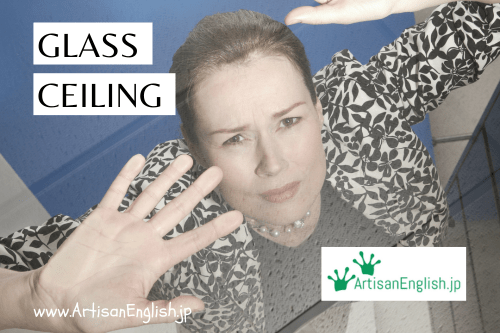
YouTube / iTunes / Spotify / Radio Public / Pocket Casts / Google Podcasts / Breaker / Overcast
Listen to ArtisanEnglish.jp posts & lesson intros here.
WotD: Glass ceiling
Glass is a valuable substance.
We can use glass to correct our vision, hold liquids, and create windows to keep the weather outside.
Problems arise when we create glass ceilings.
The glass ceiling refers to an invisible yet unbreakable barrier that prevents people, especially women, from rising to top workplace positions.
It represents the barriers and limitations that may not be immediately visible.
Still, it is solid and impenetrable, preventing women from advancing in their careers, often due to factors such as gender, race, or ethnicity.
The glass ceiling has long-lasting effects on women, the economy, and society.
When women cannot advance in their careers due to the glass ceiling, it results in a loss of diversity in leadership positions and decision-making roles.
All we have to do is look at Japan to see this lack of diversity leads to stagnant innovation, limited perspectives, and a less inclusive work environment.
Furthermore, the glass ceiling perpetuates gender inequality, leading to lower job satisfaction, decreased salaries and poor productivity not only among affected employees but in general.
When highly qualified women are artificially prevented from reaching their full potential due to systemic barriers, it hinders economic growth and innovation.
Research shows gender diversity in leadership positions is associated with higher company financial performance.
By inhibiting the advancement of women, the glass ceiling ultimately contributes to missed opportunities for economic advancement and development.
By shattering the glass ceiling, society can work towards creating a more level playing field for everyone.
It is essential to recognize the detrimental impact of the glass ceiling and take proactive steps to eliminate it, leading to a more vibrant and thriving economy.
Flesch-Kincaid Readability Test
This post is understandable by someone with at least some university education.
On the Flesch-Kincaid reading-ease test, this post scores 39.
The easier a passage is to read, the higher the score on a scale of 0 – 100.

